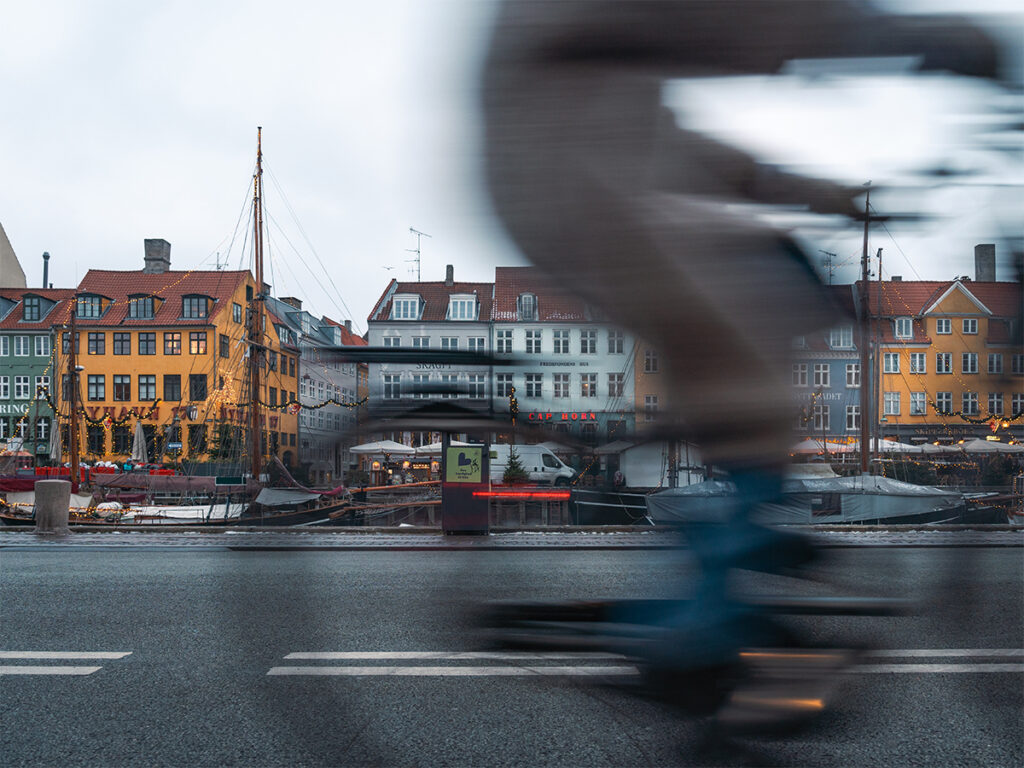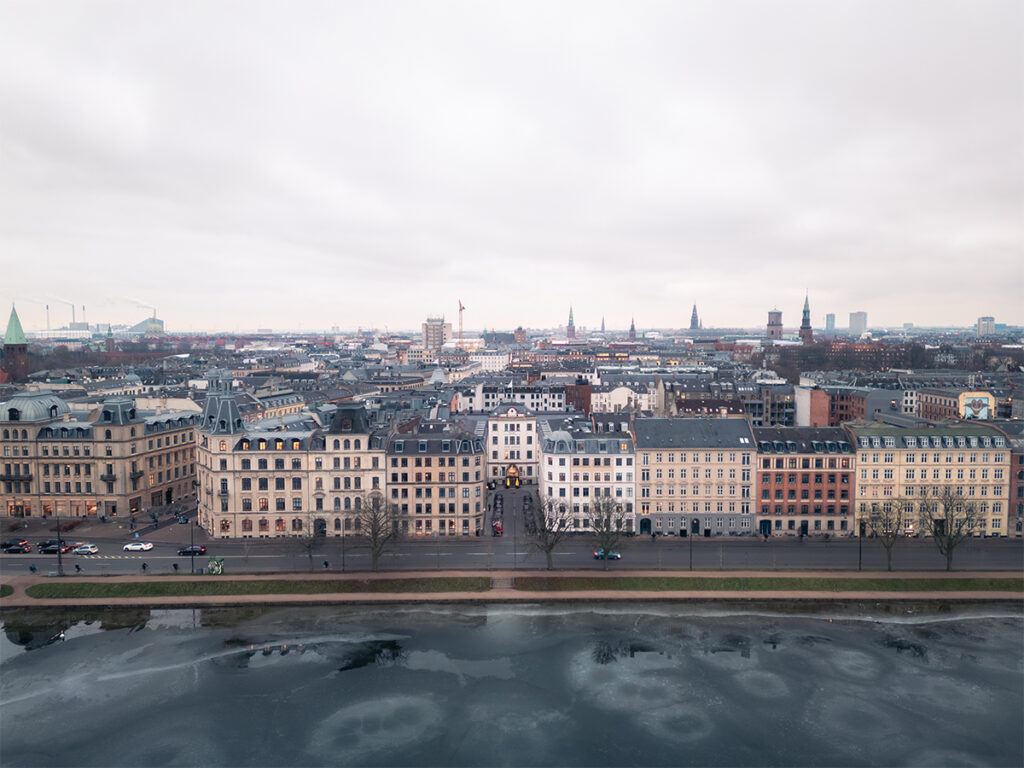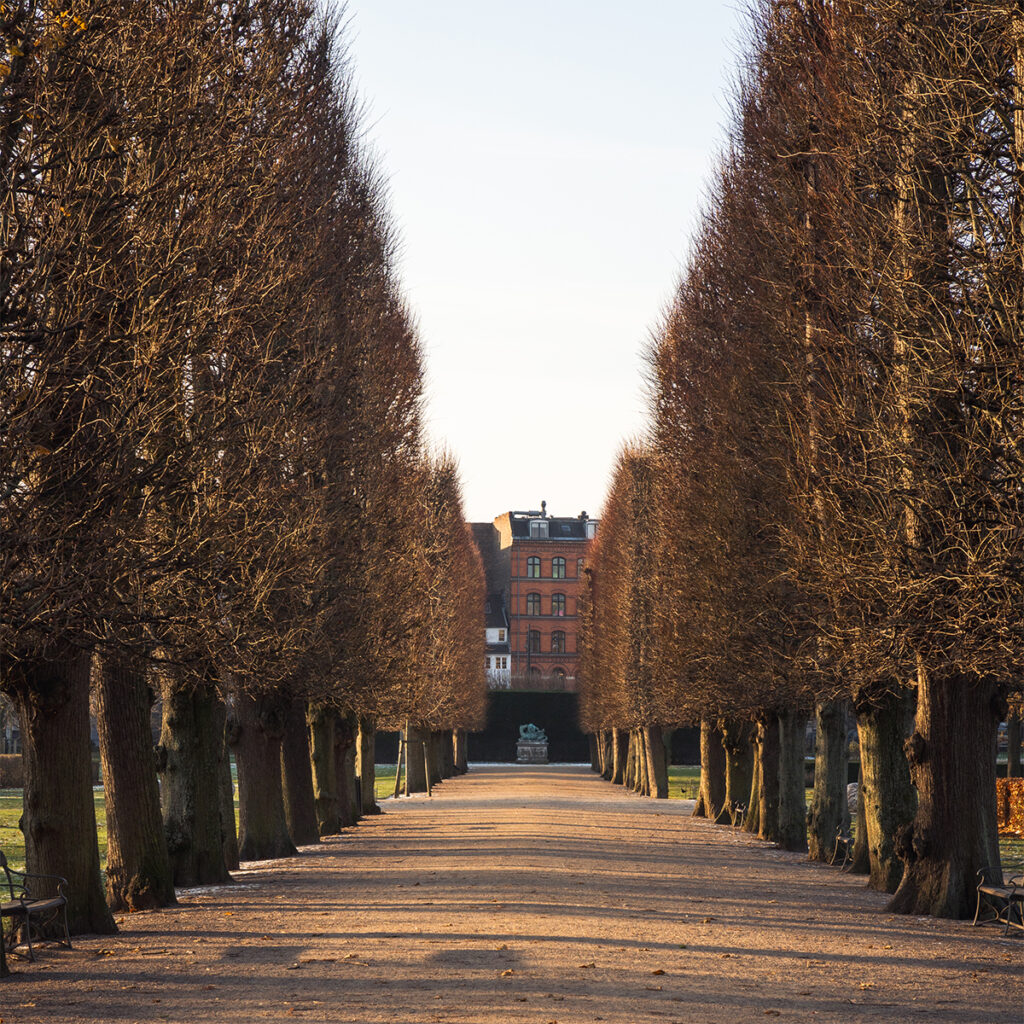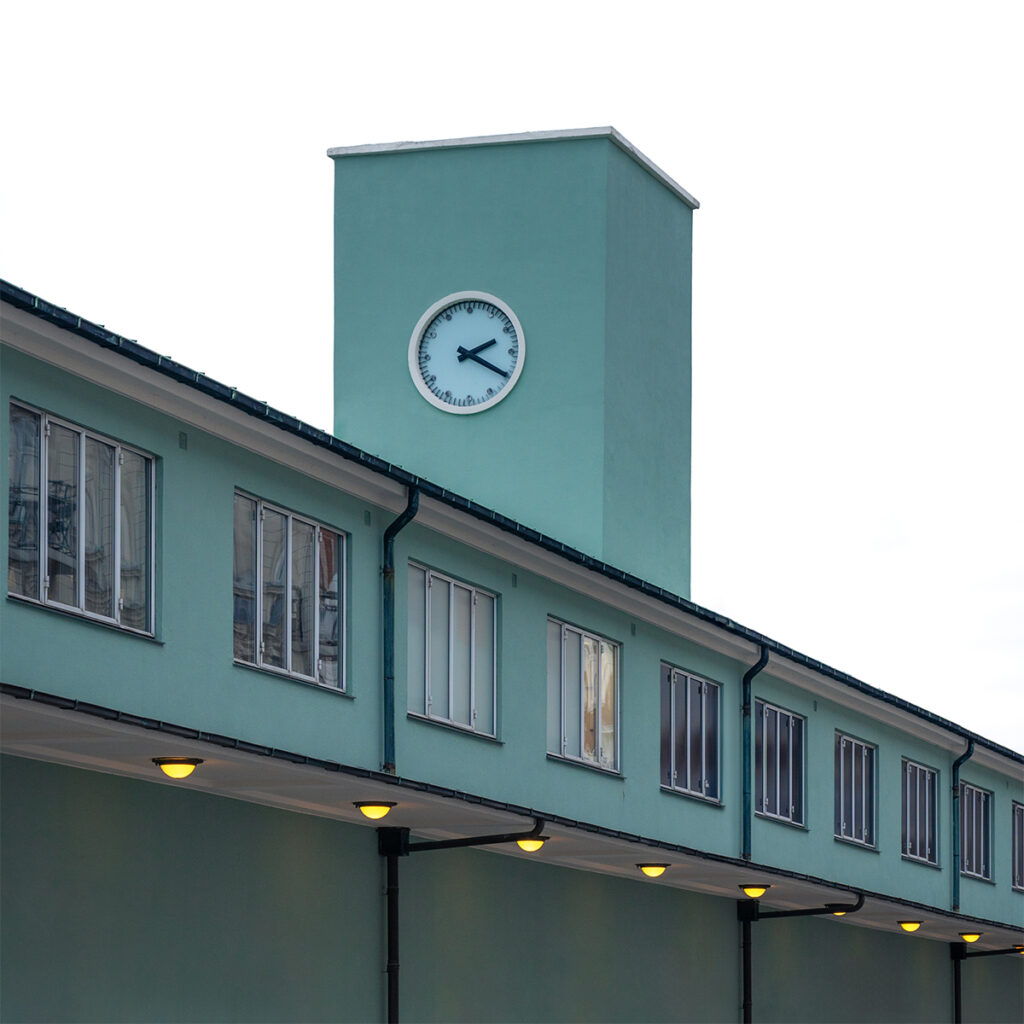Copenhagen in One Week: A First-Timer’s Travel Guide (2025 Update)
January 3, 2024
Last Updated on December 12, 2025 by Erin Donahue

It’s been a minute since I’ve traveled to Scandinavia, but exploring a new country for a week in Copenhagen was the perfect re-entry. The Danish capital consistently ranks as one of the safest and happiest cities in the world, and I have to say it lives up to the hype.
The time of year will impact your experience, but I went in the winter. This time of year, there is a heavy emphasis on hygge, which means “creating a warm atmosphere and enjoying the good things in life with good people.” Is that not the vibe during the cold months? The Norwegians and Finns also practice hygge in the winter.
Disclosure: Some links may be affiliate links. This means that I may earn a small commission if you decide to buy (at no additional cost to you).
Quick Facts About Copenhagen
- Country: Denmark
- Language: Danish (but nearly everyone speaks English)
- Currency: Danish Krone (DKK)
- Best Time to Visit: May–September for sunshine; November–December for Christmas markets and hygge season
- Getting Around: Walkable city with excellent biking infrastructure and reliable public transport
- Famous For: Design, sustainability, and being the home of hygge
Getting to Copenhagen

If you’re flying from the U.S., Copenhagen Airport (CPH) is the main international gateway. It’s well-connected with direct flights from New York City and most major hubs.
If you’re points-savvy, both SAS (Scandinavian Airlines) and Delta/KLM often run redemption deals for transatlantic flights. When I went, American Express offered a 25% transfer bonus via Flying Blue (KLM/Air France). While I could have taken advantage of a business-class flight somewhere, I never plan far enough ahead. I go where the wind takes me, like when I went to Ireland last year and used 35,000 Avios points.
I transferred 16,000 Amex Membership Rewards and 3,000 Capital One Venture X Reward Miles to cover a round-trip economy flight between JFK and CPH. With the transfer bonus, my 16,000 Amex Membership Rewards became 20,000 points! Overall, I used 23,000 credit card points + $237 for taxes and surcharges to cover the cost of my transatlantic flight.
I wanted to take advantage of Flying Blue’s stopover program and spend a few days in Paris or Amsterdam, but because I booked my flights with a promo that could only be accessed via their website, if I did the stopover, then I would have to cover the difference. Guess I’ll have to take advantage next time! It was a blessing in disguise anyway, because right after booking, the bed bug infestation in France was all over the news. I’ve previously had bed bugs in one of my apartments, and it’s a nightmare I hope to never go through again.
Do U.S. citizens need a visa for Denmark?
Americans can visit Denmark and other Schengen countries for up to 90 days visa-free. However, starting in 2025, you’ll need to complete an ETIAS pre-travel authorization (basically like an ESTA for Europe).
Where to Stay in Copenhagen (2025 Update)

Hotels in Copenhagen can get pricey, so finding one that balances design, comfort, and value takes a little research. Usually, I’m the one who does the research to set up a trip, but I was so busy that I handed off accommodation to my friend to select. Don’t quote me on this because I wasn’t the one who put in the research for the hotels this time around, but one of the criteria we booked these hotels, in particular, was because few hotels offered double beds. That might be something to be aware of if you’re traveling with someone. The ones we stayed at were great finds, though!
Below are two hotels to consider staying at when visiting Copenhagen. You can read a more indepth review I wrote here.
Hotel Kong Arthur
First up, across the street from Peblinge Lake, I spent most of my stay at the historical Hotel Kong Arthur. It’s a mid-range hotel that’s secluded but central in Nansensgade with boho shops and cafes nearby. The hotel is made up of 4 buildings set around a central courtyard and has 155 bedrooms in different shapes & sizes with a mix of classic & contemporary furnishings.
The lobby area is a great place to kill time, like it’s your living room. Every day from 5-6 pm, guests can claim their complimentary cozy hour drink from a choice of wine, beer, iced tea, or apple juice. They make a delicious espresso martini, too, but get it at noon; otherwise, you won’t sleep. They use organic coffee, and I got it at 5 pm. Paired with jet lag, my sleep cycle got messed up so badly!
Hotel Kong Arthur offers a breakfast buffet that’s 250DKK, but I didn’t partake in that because $40 for breakfast a day would’ve burned a hole in my pocket. The staff are nice and always willing to help, like with making reservations for you, which is a must for many restaurants during Christmas time.
Is 1 Hotel Copenhagen worth staying at? (Formerly Skt. Petri)
Originally a department store in the 1920s, this 2nd hotel is one of the five-star hotels in Copenhagen and aims for a laid-back luxury experience for guests. 1 Hotel Copenhagen can be found centrally located in the Latin Quarter and is a quick walk to all the main city center attractions and the transport hub of Nørreport station.
When I stayed at the property, it was still Skt. Petri. The room was bigger and the minimalist, yet cozy, Scandinavian design with subtle Middle Eastern interest was apparent everywhere. The color palette of the hotel consists of gold, deep blue, and touches of emerald. They’re more energy conscious, like the escalators go into sleep mode after no one’s been on them for a while.
While it’s the nicer of the two hotels I stayed at and has a better location, I have to say I preferred Hotel Kong Arthur. This is nitpicky, but the pillows at Hotel Skt. Petri wasn’t as firm.
How To Get Around Copenhagen

Is Copenhagen walkable?
One of the main reasons I chose to go to Copenhagen was the sheer fact that it’s a walkable city, or better yet, bikeable. I averaged 16,000 steps a day for a week. Copenhagen is so walkable that if you want to, the walk to or from the airport is only about an hour and a half. People have done it for fun!
Last winter, I had a scary situation while I was driving in Ireland, where the sun’s reflection on the pavement was literally blinding. I’ve been driving since I was 15 years old, many times through really shitty weather conditions, and this was the first time I couldn’t see the ground. Not only that, the rental car had issues that I didn’t realize until midway through the trip. I love driving, but I just don’t feel like being responsible for a rental car in the winter.
Can tourists bike easily in Copenhagen?
Biking is a part of the fabric of Copenhagen’s culture. The well-developed bike infrastructure plays a major role in Copenhagen’s focus on sustainable urban development. Everyone has a bike, from toddlers to top politicians, going to work at the parliament. In the land of bikes, renting a bicycle is an obvious choice if you can get your hands on one. That should be pretty easy to do, especially if you’re staying at a hotel. They have them available for guests.
Public Transportation
I love going to cities that are easy to navigate. If you don’t want to walk or bike, public transportation in Copenhagen is great and is included with the Copenhagen Card I talked about earlier. The M system is the metro, like the MTA subways, and the trains are underground. To and from the airport is only 15 minutes or so. The S system is the trains like NJ Transit/ LIRR / Metro North. Buses are also an easy way to get around,
As a foreigner, I wanted to give a quick observation. Interestingly, public transportation felt like an honor system that could easily be a hop-on and hop-off situation. I saw people swipe in and out at these little kiosks, but no one was checking, and there was no barrier to getting on the train or bus. If there was, a simple flash of my phone with the Copenhagen card sufficed, but it wasn’t a hard look or anything like that. I guess this has something to do with Denmark being one of the safest countries in the world. The whole time I was there, one thing I kept thinking about was the social contract the citizens have with the government.
Get The Copenhagen Card
I recommend getting the Copenhagen Card if you plan on doing a bunch of touristy activities like I did. Mine was provided by the Welcome Copenhagen team after I reached out, letting them know I was coming. It’s the official city card in the form of an app that grants access to over 80 attractions. The app proved to be incredibly easy and efficient to use, and my favorite feature was the inclusion of public transportation in the card. Make sure to only activate it once you’re ready to use it because it’s timed to a tee!
Things to Do in Copenhagen (Top Attractions)

What’s there to do in Copenhagen during the winter? The weather shouldn’t be a hindrance to exploring. Take it from me, I hate the cold. But with a couple of extra layers and a lot of movement, it’s doable. If you go in the winter like I did, it’s cold and gray out. There was only one day of sunshine the week that I was there, but there’s still a ton to do, like walking the Christmas markets and all the indoor stuff.
The first day or two is best for getting rid of jet lag and walking aimlessly around to get a feel for the area. While I was in Copenhagen for a week, I only had a 72-hour Copenhagen Card, but these are all the things I did during that time, followed by the free stuff.
Round Tower
For some quick trips that can be done in an hour, there’s the Round Tower, a 17th-century astronomy observatory and one of the city’s most iconic buildings. There’s a wide spiral path to walk up, and the top has a 360 view of Copenhagen.
Natural History Museum of Denmark
To be honest, the Natural History Museum of Denmark was not impressive. Since I was traveling with my friend who works at the Museum of Natural History in New York City, we wanted to check it out. The comparisons are unmatched because this one in Copenhagen had minimal exhibitions. There was only one special exhibit about monkeys, and then a showcase of wildlife photographers’ work.
I overheard someone else ask if there was a dinosaur exhibit, and the last time they had that was a couple of years ago.
Netto Boat Canal Tour
A Netto Boat Canal tour is a great way to see the city from the water. It’s a multilingual guided tour showcasing the historic harborfront landmarks. Even though it was only an hour, I froze my ass off because I wanted to sit in the outside area.
Rosenborg Castle
Another historical attraction I went to was the Rosenborg Castle. This is one of the more popular places to see because of the well-preserved interiors and royal treasures, but all I could think about was how musty it smelled. Definitely well-preserved!
Tivoli Gardens
For some fun, Tivoli Gardens is a must-visit. It’s the second-oldest amusement park in the world and is the place that inspired Walt Disney to come up with Disneyland. The oldest amusement park is also in Denmark, but in another town. Guess the Danes knew how to have fun back in the olden days. Part of the happiness index, amirite??
Frederiksborg Castle
Have you ever wondered what it’s like to live in opulence? Take a day trip out to Frederiksborg Castle; it’s worth it. Built in the 17th century, this Renaissance castle is the largest in Scandinavia and is one of the most famous in Denmark, and I had almost the whole place to myself. It’s also home to the Museum of National History (not to be confused with the Natural History Museum mentioned above).
To get there, take the A-line of the S train to the last stop, Hillerød. From there, you can either walk or hop on the local 301 or 302 bus and get off at “Frederiksborg Slot”. Slot is the Danish word for castle.
This place has an actual mote! Have you ever seen a castle with a mote? I only heard about them in fairy tales or Monty Python. The first area you’ll enter is the Frederiksborg Castle Chapel, with its original decor dating back to the 1600s. The Gallery is home to the historic Compenius organ, and every Thursday there’s a recital on it. When I visited, there was the Magical Ceilings special exhibit, which is the spectacular staging of the castle’s iconic ceilings. It was super trippy! There’s also a beautiful baroque garden, but I went on a snowy day and had no interest in walking around freezing. I definitely will have to go back one day!
What are the best free things to do in Copenhagen?

The next two locations are also included in the Copenhagen Card, but if you don’t have the card and just want to see the exterior for free, that’s sufficient.
Botanical Garden
The Botanical Garden is Denmark’s largest collection of living plants. It’s a free public green space to roam and relax in, filled with rare trees, shrubs, and herbs. Access to the Palm House requires a separate ticket, either under the Copenhagen Card or the six museums in one ticket at the Parkmuseerne Museum district.
Amalienborg Palace
In the heart of Copenhagen lies Amalienborg Palace. On one side is the Marble Church with its huge copper-green dome, and on the other is the museum that gives access to a behind-the-scenes exhibit of the monarchy today and its traditions.
Amalienborg is famous for its royal guard, known as The Royal Life Guard “Den Kongelige Livgarde.” Every day, you can watch the tradition of the changing of the guards.
The Little Mermaid Sculpture
Take your pictures in front of The Little Mermaid sculpture, which was inspired by Hans Christian Andersen’s famous fairy tale. It’s made of bronze and granite and sits in the water at Langelinie Pier.
Nyhavn Waterfront
Is it Europe if there’s no picturesque canal with colorful houses? Nyhavn is one of the oldest parts of the Copenhagen harbor and dates back to 1673. This is essentially their Times Square. As always, if you want to take pictures at popular photo spots when it’s empty, you’re going to have to sacrifice some sleep and get there early.
While you’re at Nyhavn, drink free samples of gløgg since they give it away everywhere. Gløgg is a hot and sweet mulled wine that goes hand in hand with the Danish Christmas season. Many Danes add additional alcohol, like schnapps or rum, for a fuller flavor and kick.
Public Trampolines
Down the Havnegade in Copenhagen, you’ll find a series of five soft-play trampolines built into the sidewalk by the canal. This is what I looked forward to the most on my trip, and it’s a great way to get those endorphins flowing!
Where to Eat in Copenhagen (Budget-Friendly Tips)

Copenhagen, or Denmark overall, or all of Scandinavia, actually, is NOT a budget-friendly destination. On top of that, Copenhagen isn’t a “walk-in” type of city. At least, not during Christmas time. Eating out adds up quickly. Whatever savings I got when I booked my flights with credit card points netted out from eating alone. I have to say this is probably the first trip I was starving every day. While Copenhagen is home to some of the best restaurants in the world, 14 of them Michelin-ranked, I did not want to blow $30 or more on each meal. Grocery shopping also wasn’t an option since the hotels I was staying at didn’t have a kitchen. That being said, some restaurants have lunch specials. Look around for the signs that are laid out on the street. Also, you can always count on Chinese restaurants and Burger Concept, a Danish fast-food joint.
Copenhagen is big on pastries & coffee, which I’m a fan of, but paying $11 for a latte & croissant is kind of ridiculous. As someone who lives in one of the most expensive cities in the world, I can confidently say that’s more than New York City’s prices! I typically pay $8. However, one bakery you must eat at is Sankt Peders Bageri (Saint Peter’s Bakery), the oldest in town. I went there on my last day and wished I had gone earlier in my trip. They’re known for their cinnamon buns, but the real star to me was their cinnamon Danish. It was so flaky and buttery, and their croissant has got to be the most buttery one I’ve had in my life.
Travel Tips for First-Time Visitors To Copenhagen
- Book ahead. Restaurants and hotels fill up quickly.
- Embrace hygge. Slow down, cozy up, sit by a fireplace.
- Pack layers. Even in warmer months, the weather can get chilly.
- Card over cash. Most places are cashless, so no need to over-withdraw.
- Tap water is safe
Protect Your Trip to Copenhagen With Travel Insurance
Before you book your Copenhagen trip, protect yourself against flight delays, lost luggage, and medical emergencies. You can purchase it even after your trip has started! I use SafetyWing for all my European travel because it covers:
- flight delays and cancellations
- Lost or delayed luggage
- Medical emergencies abroad
- Adventure activities coverage
FAQs About Visiting Copenhagen for One Week
Is one week in Copenhagen too long for first-time visitors?
One week in Copenhagen gives first-time visitors enough time to explore the city at a relaxed pace, take day trips, and experience neighborhoods without feeling rushed.
How many days do you actually need in Copenhagen?
Most travelers need 4–7 days to see Copenhagen’s main attractions, museums, and neighborhoods. A full week allows for a slower, more immersive experience.
Is Copenhagen walkable for tourists?
Copenhagen is extremely walkable, with flat terrain and pedestrian-friendly streets. Many major attractions are within walking distance of each other.
Can tourists easily bike around Copenhagen?
Biking is one of the best ways to get around Copenhagen. The city has dedicated bike lanes everywhere, and many hotels offer bike rentals for guests.
Is Copenhagen worth visiting in winter?
Yes, especially for travelers who enjoy Christmas markets, cozy cafés, and fewer crowds. Winter visitors should pack layers and expect shorter daylight hours.
To keep up to date with everything I share, follow along on my social media and read up on what camera gear I use when I travel.
Leave a Reply Cancel reply
is the creative studio of Erin Donahue, offering photography, videography, and content creation services for brands, hotels, tourism boards, and publications.
Based in New York City, but available globally, this multi-disciplinary digital creative left a career in the hedge fund space to pursue her passion as a travel and brand photographer, creating imagery that resonates with audiences. She approaches every project with a focus on storytelling, producing visuals that engage and inspire.
Her work has been commissioned by brands like Sony, Apple, and Google, and the content she has created has reached millions across social media.
To keep up to date with everything she shares, follow along on social media and read up on what camera gear she uses to capture the shot.
Niredonahue
© Erin Donahue Creative LLC, All Rights Reserved
Terms of Service & Privacy Policy